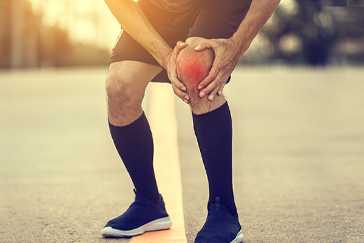
introduction
When embarking on a stretching routine, it’s important to follow these guidelines to ensure safety and effectiveness:
- Find the Sweet Spot: Stretch only until you feel mild discomfort, not pain. Pushing into pain can cause harm and is counterproductive.
- Breathe Naturally: Avoid holding your breath. Continuous, natural breathing helps relax muscles and increases the effectiveness of your stretches.
- Timing is Key: Hold each stretch for 20-30 seconds. This duration allows muscles to lengthen and adapt, enhancing flexibility.
- Frequency of Stretching: Consistently stretch in sets of 3-5 per session. This regularity helps in gradually increasing flexibility and reducing muscle tightness.
- Regular Routine: Incorporate stretching into your routine at least 2-3 times a week for optimal benefits.
Here are some of the 10 stretches to avoid knee pain.
1. single leg hamstring stretch
Position: Lie supine with both legs on the table
Procedure
- Loop a towel around the foot and hold the ends of towel with your hands
- Keep the knee straight and feet in dorsiflexion
- Pull the leg up towards the ceiling
- Pull until you feel a stretch in the back of the leg and sustain the stretch for 30 seconds
- Relax and repeat
These Might be of Interest
2. pelvic tilt hamstring stretch
Position: Sit on the edge of the chair with injured leg resting straight.
Procedure
- The uninjured leg is bent at 90 degrees.
- With your back straight, bend forward at the hips
- Rest yours hands on your thighs for support
- Lean forward until you feel a stretch and then hold for 30 seconds
- Relax and repeat
3. chair stretch
Position: Sitting with the leg to be stretched extended across to another chair or sitting at the edge of a treatment table, with the leg to be stretched on the table and the opposite foot on the floor.
Procedure
- Lean the trunk forward towards the thigh, keeping the back extended so that there is no motion at the hip joint
- The stretching technique should not be used when one has low back impairment
4. standing quadriceps stretch
Position: Standing with the involved hip extended and knee flexed
Procedure
- Grasp the ankle
- Maintain a posterior tilt and not let the back arch or side bend during this stretch
- If it is too difficult, you may place your foot on a chair or bench located behind the body rather than grasping the ankle
5. gravity assisted supine wall slides
Position: Supine, with buttocks close to the wall and lower extremities vertically resting against the wall.
Procedure:
- Hip flexed and knee extended
- Slowly flex the involved knee by sliding the foot down the wall until a gentle stretch sensation is felt
- Hold in a comfortable position, then slide the foot back up the wall
6. rocking forward on a step
Position: Standing with the foot of the involved knee on a step.
Procedure
- Rock forward over the stabilized foot, flexing the knee to the limits of its range
- Rock back and forth in a slow, rhythmic manner or hold a stretched position
- Begin with a low step or stool
- Increase the height as more range is obtained
7. rectus femoris stretch
Position: Lie on your stomach on the edge of the treatment table.
Procedure
- Involved side leg on the table with knee flexed
- Opposite extremity hip and knee extended
- Grab the involved ankle and extend at hip
- Hold the stretch
- Alternatively place pillow under the involved thigh on the table
8. it band stretch
Position: Standing with the side to be stretched towards a chair and the hand on that side supports the chair.
Procedure
- Extend, adduct and externally rotate the extremity to be stretched and cross it behind the other extremity
- With foot on the floor, shift your pelvis towards the chair, and allow the normal knee to bend slightly
- There will be a slight side bending of the trunk away from the side being stretched
9. hip adductorstretch
Position: Sit on the floor with your knees apart and the bottom of your feet together.
Procedure
- Keep your chest up and your back straight
- Bend forward at the hips while accentuating your lumbar lordosis (keep pelvis tilted anteriorly)
- Apply gentle pressure to your knees pushing them towards the floor
- Relax and hold this for the appropriate time
10. heel cord stretch
Position: Standing facing a stationary object with your feet apart and your toes turned in slightly.
Procedure
- Place your hands on the object and lean forward until you feel a stretch in the calf of your leg
- Hold for 5 seconds
- Do not bend your knees or allow your heels to come off the floor
Seeking insights to avoid knee pain and its treatment? Experience the ease of Portea’s in-home physiotherapy services. For more information or to schedule a session, call us at 1800-121-2323 or visit our website at www.portea.com. Embrace the comfort of receiving expert care in your own home with Portea.
about writer
Dr. S. Senthil Kumar
S.Senthil Kumar is a BPT and has completed his studies from Jaya College of Physiotherapy, Thiruninravur. He has over 6 years of experience in Physiotherapy and has previously worked with Rotary Hospital and Fit-line Clinic. He is certified in myofascial release techniques, therasuit for cerebral palsy, acupuncture and varma therapy.
faqs
What are the Foods to Avoid If You Have Knee Pain?
If you have knee pain, avoid inflammatory foods like processed sugars, refined carbs, red meats, and full-fat dairy. Trans fats, found in fried foods and baked goods, and certain vegetable oils should also be limited. These foods can exacerbate inflammation and worsen knee pain. Opt for a balanced, anti-inflammatory diet.
Is it okay to walk with knee pain?
Walking with knee pain can be beneficial if done carefully. It strengthens the muscles supporting the knee, improving joint health. However, listen to your body: walk on flat surfaces, wear supportive shoes, and keep strides short. If pain worsens, rest, and consider consulting a healthcare professional for guidance.
What is the best sitting position for knee pain?
The best sitting position for knee pain is keeping your knees at a right angle, with feet flat on the floor, and avoiding crossing your legs. Ensure your seat height allows thighs parallel to the floor, offering proper support. This position reduces stress on your knee joints, aiding in pain relief.
How to relax knees?
To relax your knees, try gentle stretches that target the surrounding muscles. Elevating your legs can reduce swelling and stress on the knees. Applying warm compresses can ease stiffness, while cold packs help with swelling and pain. Regular, low-impact exercises like swimming or cycling also promote knee relaxation.
How physiotherapy for knee pain help you?
Physiotherapy for knee pain helps by strengthening the muscles around the knee, enhancing joint stability, and improving flexibility. It reduces pain, aids in healing, and prevents future injuries. Tailored exercises and therapies under professional guidance ensure effective, personalized treatment for long-term knee health and mobility.
Portea offers physiotherapy at home for knee pain. If you’re in need of physiotherapy or any nursing care right at your doorstep, just reach out to us. Immerse yourself in our world-class healthcare services, all from the comfort and safety of your home.
Doctor Consultation
Nursing
Physiotherapy
Trained Attendant
Elder Care
Mother & Baby Care
Lab Tests
Medical Equipment
Speciality Pharma
Critical Care








